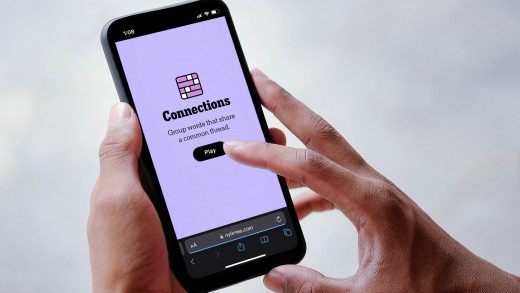Thanks for reading Startups Weekly. Want the weekly digest in your inbox every Saturday? Sign up here.
I spoke to my editor this week about the usual: upcoming stories, the future of the podcast and the existential dread of imposter syndrome amid a year-and-a-half of extreme change. The last bit took up the majority of the conversation. Go figure!
Our conversation was helpful because it put words to stresses that often sit in between the lines and gave weight to small things that get hidden during a pandemic-sized year. Don’t worry, I won’t bore you with my thought loops, but I will extract a few lessons that I think are broadly applicable to Startups Weekly readers, because based on your clicks, I know you’re into tips (and earnest ones, at that):
- Give yourself grace. The pandemic has been confusing, imbalanced and brought a lot of loss to a lot of people. If you feel like you’re operating at anything less than 100% right now, remember that you are operating during a time when the world feels like it’s depending on a frayed lightbulb for guidance. Before you are hard on yourself for not being productive, think about where your productivity standards are coming from, and if they are even fair in the first place.
- Your problems are not unique. While we all are diverse, nuanced individuals, we aren’t alone in a lot of what makes us human. Everyone overthinks, everyone soul searches, everyone has personal and professional insecurities that bubble up in non-obvious ways. By believing that your problems are not entirely unique, I think you’ll find yourself feeling more in control of turbulence. Which brings me to my next point …
- Vulnerability is everything. Vulnerability was front and center in the first inning of the pandemic, where we were all brought into each other’s living rooms and home offices and backyards through Zoom. That vibe has somewhat faded as we’ve adapted more and more to distributed work, but it doesn’t mean we can’t try to find ways to be more vulnerable with each other. Let yourself have a voice, even in moments where it’s easier to stay quiet, because you will feel closer at the end of it.
Take what you will from the above advice (or see these tips from a fellow entrepreneur), but I think it all boils down to a belief that we should be humans first, and insert job role here second. It’s truly (still) an unprecedented time in this world, and ending mental health stigma in general is a worthwhile goal.
The rest of this newsletter is about a cyberattack on a VC firm, AfterSquare, and an EC-1 about 911. Before we get on with it, we’re excited to announce that TechCrunch is launching another newsletter! This Week in Apps by the inimitable Sarah Perez launches this Saturday morning, August 7. Sign up here to be in the know about all the apps. As always, you can find me on Twitter @nmasc_.
Cybercriminals target VC firm
Image Credits: Getty Images
Advanced Technology Ventures, a Silicon Valley venture capital firm with $1.8 billion in assets, was hit by a ransomware attack. Cybercriminals stole personal information on some 300 of ATV’s limited partners, also known as the people who have put millions of millions into its fund, according to a scoop by Zack Whittaker.
Here’s what to know: This particular attack stole key information on a hush-hush part of how venture money works. VC firms often do not disclose all of their LPs due to competitive advantage and secrecy. The firm may not want competitors to know who is backing them, while a limited partner may not want others to know where their money is going. As ransomware groups “continue to go big-game hunting,” per Whittaker, LP lists are a part of that — and other VC firms should take note.
The money behind the money:
- Why founders should care where their VCs get their money
- Venture capital LPs are the missing link to solving Silicon Valley’s diversity problem
- Two new efforts could widen the pool of people investing directly in venture funds
After Square pays

Image: Bryce Durbin/TechCrunch
Fintech lit up this week after Square bought ‘buy now, pay later’ giant Afterpay for $29 billion. The deal, which is expected to go through next year, will see Afterpay integrate its services into Square’s Seller and Cash Pay ecosystems. Mary Ann Azevedo reported the news amid the sector’s heat up, and Alex Wilhelm shared why he thinks Square landed on that magic number.
Here’s what to know: Everyone is building their own in-house BNPL service, from Shopify (!), to PayPal to, reportedly, Apple. So, while the “Shopify should buy Affirm” theories were aplenty, reporter Ryan Lawler gave more context on what this deal means for startups.
Matthew Harris of Bain Capital Ventures told TechCrunch that, as the BNPL space fills up, he doesn’t see “a lot of headroom/new angles in the consumer BNPL space … scale matters and it will be hard for new entrants to achieve escape velocity.”
Instead, he thinks there is opportunity for BNPL models to break into the B2B space, where companies can “replace/enhance traditional invoice financing and trade credit.”
Friends of fintech:
- Neobanks’ moves toward profitability could be the path to public markets
- Robinhood is now a stonk
- Avoid these common financial mistakes so your startup doesn’t die on the vine
The 411 on 911

Image Credits: Nigel Sussman
TechCrunch Managing Editor Danny Crichton dove into the heart of 911 and emergency response in our latest EC-1 on RapidSOS. The company, which has raised more than $190 million, has built an emergency response data platform that helps first responders access a firehose of data in high-intensity situations. It processes more than 150 million emergencies every year, and per Crichton, it’s almost certainly integrated into your smartphone right now.
Here’s what to know: From the smoking-pizza-oven early years to its pivot without product design, RapidSOS’ story shows how much you can get done in a decade of stagnation from Capitol Hill.
The four-part series:
- Part 1: Origin story “Smoking pizza ovens and pilfered dollar bills, or the early story of RapidSOS” (2,700 words/11 minutes)
- Part 2: Product and business “RapidSOS learned that the best product design is sometimes no product design” (3,700 words/15 minutes)
- Part 3: Partnerships “How RapidSOS used creative tactics to build partnerships and a BD engine at scale” (4,000 words/16 minutes)
- Part 4: Next-generation 911 “After a decade, Congress might finally bring 911 into the internet age” (2,000 words/8 minutes)
Around TC
- Ryan Lawler has returned to TechCrunch! He’s working with the ExtraCrunch team to bring you some deeper analysis of what’s happening in the fintech world. He’s particularly interested in the B2B side of fintech, including everything from startups building infrastructure and developer tools for companies deploying their own financial services to corporate cards, startup banking and spend management services TechCrunch readers are likely to use. If you work at a relevant company in the space, have invested in one of those companies, or are a customer or partner of one of those companies, he’d love to get your perspective on what’s interesting and what’s happening. You can email him at [email protected].
- I haven’t given you a discount code in a while, so use code EQUITY for a good deal on your Extra Crunch subscription.
- The Disrupt Agenda is alive and breathing, so check out who is joining our virtual stage in September and buy your tickets.
Across the week
Seen on TechCrunch
- Venture capital probably isn’t dead
- The first Zambian startup to get into YC is developing Africa’s first card-issuing API
- As edtech evolves, LatAm reskilling platforms raise millions to bring outcomes into the mix
- Duolingo is working on a math app for kids
Seen on Extra Crunch
- Founders must learn how to build and maintain circles of trust with investors
- Kodiak Robotics’ founder says tight focus on autonomous trucks is working
- Greylock’s Mike Duboe explains how to define growth and build your team
Talk soon,
N











